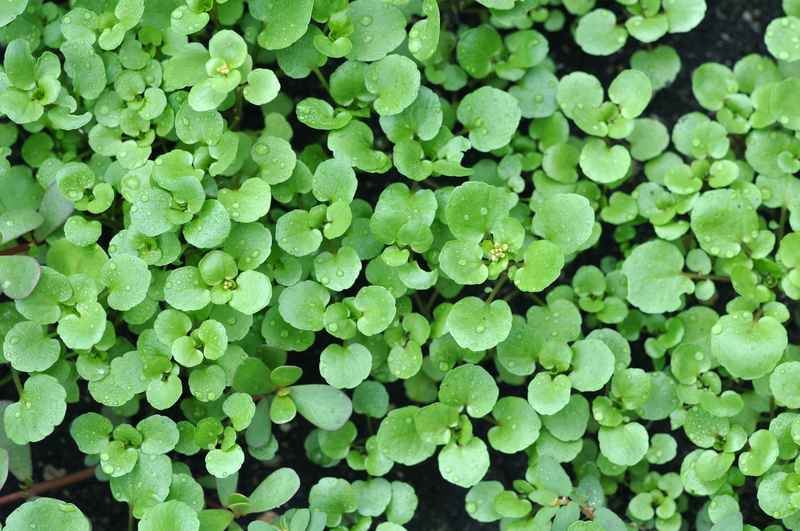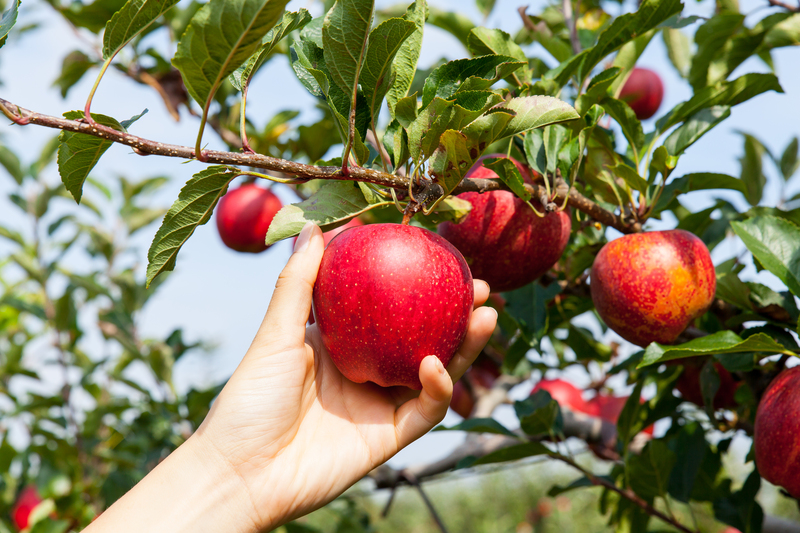Comprehensive Strategies for Orchid Care
Posted on 15/08/2025
Comprehensive Strategies for Orchid Care: The Complete Guide
Orchid plants are renowned for their exquisite beauty and fascinating diversity. As one of the largest plant families, orchids often captivate both hobbyists and professional horticulturists. However, their delicate reputation can seem intimidating, leading many to believe that successful orchid maintenance is out of reach. The truth is, with thorough knowledge and the right approach, anyone can achieve thriving, blooming orchids year-round. In this comprehensive article, we'll explore all the essential aspects of orchid care, providing actionable strategies and expert tips for every stage of the orchid's growth cycle.
Understanding Orchid Types: Choose Your Orchid Wisely
Before delving into the details of routine orchid plant care, it's crucial to recognize that not all orchids are created the same. There are over 25,000 naturally occurring species and even more hybrids. Some species are far more forgiving for beginners, while others are best reserved for experienced growers. Here are some of the most popular choices:
- Phalaenopsis (Moth Orchids): Ideal for beginners due to their resilience and ease of flowering.
- Cattleya Orchids: Known for their large, fragrant blossoms and variety of colors.
- Dendrobium Orchids: Offer diversity in size and shape, great for intermediate growers.
- Oncidium Orchids: Famous for their prolific and vibrant "dancing lady" flowers.
- Vanda Orchids: Require more attention and humidity, but reward with unforgettable blooms.
Tip:
Research the specific needs of your orchid species before proceeding with a generalized care routine. Understanding the natural habitat of your plant can greatly enhance your success in cultivating healthy orchids.

Ideal Environment for Orchids
The right environment is fundamental to successful orchid care. Orchids are epiphytes, meaning they often grow on other plants or objects rather than in soil, drawing moisture and nutrients from the air. Thus, mimicking their natural conditions is key. Here's how to create an optimal habit:
1. Light Requirements for Orchids
- Most orchids prefer bright, indirect sunlight. Direct afternoon sun can scorch their leaves.
- An east-facing window is usually ideal; filtered light through a sheer curtain also works well.
- Some species, like Dendrobium and Cattleya, tolerate more intense light, while Phalaenopsis thrives in lower light conditions.
- Leaves that are too dark mean more light is needed; leaves that turn yellow or develop dark spots may be getting burned.
2. Temperature & Humidity for Optimal Growth
- The majority of orchids thrive in temperatures between 60?F (16?C) and 80?F (27?C).
- Nighttime temperatures can be about 10-15?F (6-8?C) cooler to promote blooming cycles.
- Orchids typically require 50-70% relative humidity. Use a humidity tray or humidifier if your environment is dry.
- Mist the leaves regularly with distilled water, but never saturate the flowers or the growing medium.
The Art of Watering: Essential to Orchid Health
Proper watering is perhaps the most vital yet commonly misunderstood aspect of orchid plant care. Overwatering is the number one killer of houseplant orchids. Here's how to strike the right balance:
- Water orchid plants only when the potting medium is nearly dry, but not completely desiccated.
- Stick your finger about an inch into the medium or use a wooden stick--if it feels moist, wait another day before watering.
- Typically, watering once a week is sufficient, but this varies with temperature, humidity, and potting material.
- In winter, reduce frequency; in summer or high heat, check soil moisture more often.
- Use tepid, distilled, or rainwater; avoid softened or heavily chlorinated water, which may damage roots.
- Always ensure excellent drainage, as stagnant water suffocates roots and causes rot.
Watering Orchids: Methods and Mistakes
- Thorough soak method: Saturate the entire pot, let water drain completely, and empty any excess from saucers or trays.
- Avoid "ice cube" watering: It does not mimic natural conditions and can shock sensitive roots.
- Never allow roots to sit in water as this will quickly lead to root rot and irreparable damage.
Choosing the Right Potting Medium and Repotting Orchids
A unique feature in orchid culture is the use of well-aerated, fast-draining potting mixes instead of traditional soil. Examples include bark chips, sphagnum moss, charcoal, perlite, and coconut husk. Here's why:
- Well-drained mixes replicate the orchid's natural growing conditions--on trees, rocks, and bark in tropical climates.
- Regular soil traps moisture and suffocates roots, causing decay.
Repotting Orchids: When and How
- Repot every 2-3 years or when the potting medium breaks down and retains too much water.
- Choose a pot just large enough to fit the orchid's root system, as orchids bloom better when slightly root-bound.
- Steps for Repotting:
- Gently remove the orchid from its pot. Shake off old medium.
- Trim away soft, brown, or mushy roots with sterilized scissors.
- Place in fresh orchid mix and water thoroughly.
Fertilizing Your Orchid: Nourishment for Blooms
Like most flowering houseplants, orchids need ongoing nutrition for healthy leaves and prolific blooms. Because orchid potting media hold few natural nutrients, supplemental feeding is essential.
How and When to Fertilize
- Use a balanced, water-soluble orchid fertilizer (such as 20-20-20) diluted to half or quarter strength.
- Follow the "weakly, weekly" rule--fertilize with every other watering during active growth (usually spring to early fall).
- During the winter rest period, reduce or withhold fertilizer.
- Avoid overfertilizing; excessive salts can accumulate and damage delicate roots.
Pest and Disease Management in Orchids
Despite your best efforts, pests and pathogens occasionally threaten even the healthiest orchid collections. Early detection and prompt action are essential strategies in orchid care:
- Common pests: Aphids, spider mites, scale insects, and mealybugs. Regularly inspect leaves, stems, and roots.
- Disease threats: Fungal and bacterial infections. Symptoms include soft, blackened spots, wilting leaves, or a foul odor at the roots.
- Isolate affected plants to prevent spread.
- Wipe leaves with soapy water or use neem oil to control minor infestations.
- For persistent issues, use insecticidal soap or horticultural oil, following package instructions.
- Trim away rotten roots or visibly infected tissue with sterilized tools.
Encouraging Orchids to Bloom
One of the biggest joys of orchid cultivation is enjoying dazzling, long-lasting blooms. Many orchid lovers struggle to induce flowering, but with the right strategies, you can enjoy healthy flower spikes year after year.
- Maintain temperature fluctuations between daily highs and nighttime lows to stimulate bloom cycles.
- Increase indirect light during the active growing season.
- Ensure your orchid enjoys a brief "rest period" of reduced water and fertilizer in winter, which mimics natural dormancy.
- Do not repot or disturb roots during the blooming period--this causes stress and may halt flower production.
- Once flower spikes emerge, stake them gently for support and avoid moving the plant.
Troubleshooting Common Orchid Problems
Even with meticulous orchid care, problems can arise. Here's a quick guide to spotting and correcting frequent issues:
- Yellow Leaves: May indicate overwatering, old foliage, or too much direct sun.
- Wrinkled Leaves: Suggests underwatering or root issues.
- Root Rot: Caused by excessive moisture. Remove affected roots and repot in fresh medium.
- Buds Dropping Early: Often results from sudden temperature changes, drafts, or low humidity.
- No Flowers: Incorrect light, insufficient nutrients, or lack of seasonal temperature drop.
Quick Troubleshooting Table
| Symptom | Possible Cause | Solution |
|---|---|---|
| Brown leaf tips | Low humidity, fertilizer burn | Increase humidity, flush potting medium, use diluted fertilizer |
| No new growth | Lack of nutrients, low light | Increase food and/or move to brighter location |
| Spots or yellow patches | Sunburn, fungal or bacterial infection | Relocate plant, remove affected tissue, treat with fungicide |
The Orchid Care Calendar: Year-Round Strategies
Comprehensive orchid care involves adapting your routine to the life cycle of the plant:
- Spring: Resume regular watering and feeding as new growth appears. Repot if necessary.
- Summer: Ensure adequate humidity, shade from hot midday sun, and maintain regular fertilizing.
- Autumn: Gradually reduce fertilizer, prepare for a potential dormant period.
- Winter: Water less frequently, reduce or pause feeding, provide extra humidity if heating dries air.

Advanced Care: Propagating Orchids
If you're ready to expand your orchid collection, propagation offers exciting possibilities. The most common methods include:
- Division: For sympodial types (like Cattleya and Dendrobium), gently separate the root mass, ensuring each division has at least 3-4 pseudobulbs and healthy roots.
- Keikis: Some orchids, such as Phalaenopsis and Dendrobium, naturally form baby plants known as "keikis" on their flower spikes. When roots are a few inches long, detach and pot separately.
- Back bulbs: Older, leafless pseudobulbs can sometimes regenerate new growth if provided with warmth, moisture, and patience.
Conclusion: Enjoying Success with Orchid Plant Care
Mastering orchid care requires a blend of basic horticultural knowledge, observation, and a little patience. By selecting the right species, creating an optimal environment, understanding the nuances of watering and feeding, and responding promptly to pests and disease, you pave the way for vibrant, repeat-blooming orchid plants. With the comprehensive strategies for orchid care detailed in this guide, orchid enthusiasts of all levels can transform their homes into dazzling displays of elegance and color.
Ready to take your orchid plant care to the next level? Bookmark this guide and revisit it as you nurture your plants from root to bloom. Happy growing, and may your orchids reward you with magnificent flowers year-round!

